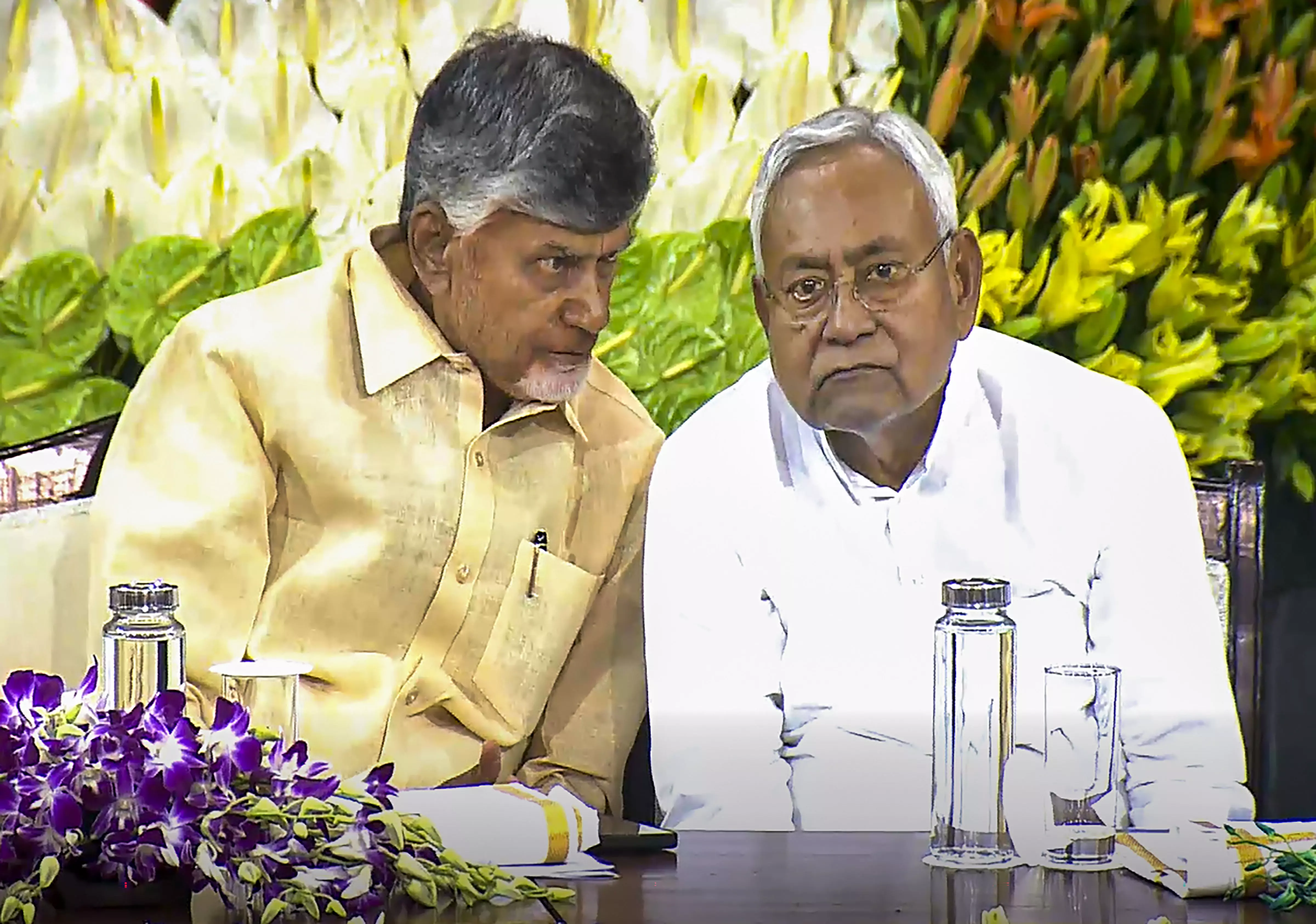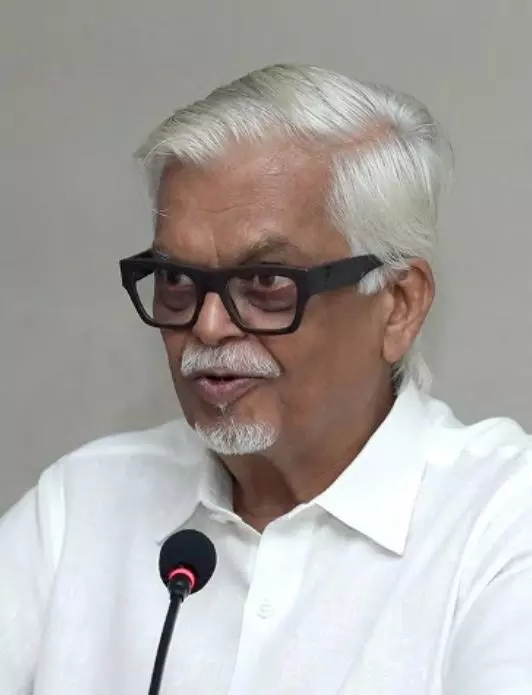Sanjaya Baru | Can Naidu play a decisive role at the national level?

From the time the final Lok Sabha tally was out and it was clear that Narendra Modi would fall short of a majority, all eyes have been on the role that his newly-acquired allies in the National Democratic Alliance would play. On Friday, after the meeting of the NDA members of Parliament, it became clear that both Nara Chandrababu Naidu and Nitish Kumar are now shadows of their past selves. It would, however, be unfair to criticise them for this. Age takes its toll. Politics too. Both need Prime Minister Modi as much as he needs them. And, all said and done, Mr Modi is not Atal Behari Vajpayee. NDA 2.0 is not NDA 1.0.
The national media was agog with speculation that Mr Naidu would be a tough customer and would keep Mr Modi on a short leash, extracting concession after concession, dictating appointments, securing favours and so on. That was how he played it in NDA 1.0 with Prime Minister Atal Behari Vajpayee. In 1998, Vajpayee returned to power determined to hold on to it after having lost it in 1996, after a 16-day term. In 1999 he was voted out and regained power with the support of allies like the Telugu Desam Party that remained loyal during his one year in office.
Between 1996 and 2004, through the tenures of H.D. Deve Gowda, Inder Kumar Gujral and Vajpayee, Mr Naidu tasted the fruits of power in New Delhi. Those nine years as chief minister of united Andhra Pradesh, working with PMs dependent on his support, defined the political personality and national image of Chandrababu Naidu. He used the opportunity to lay the foundations of the Greater Hyderabad of today – adding Cyberabad to the “twin cities” of Hyderabad-Secunderabad. Mr Naidu’s local, national and global image was made by that opportunity.
What today’s commentators forget, however, is that not only did Vajpayee’s BJP have a mere 182 seats in Lok Sabha, but that the TDP had as many as 29, thanks to the size of united Andhra Pradesh. In the 18th Lok Sabha, Prime Minister Narendra Modi has 240 MPs while Mr Naidu has only 16. Numbers matter. But, more than numbers, what a political leader wants to do, needs to do, has to do, with those numbers also matters. As chief minister of a truncated Andhra Pradesh, Mr Naidu needs money to deliver development and a new capital to the people of Andhra. He wants to ensure a smooth succession within his own party, helping son Lokesh inherit the mantle. Mr Naidu is older, wiser but also in some hurry. Staying with Mr Modi is what he will do.
Even so, Mr Naidu can still make a difference. Consider the message and body language of Mr Naidu and Mr Kumar at the meeting of the NDA MPs. Mr Nitish Kumar sought to ingratiate himself to Mr Modi. He behaved like a supplicant, feeding the master’s ego.
He pooh-poohed the INDIA constituents, desperate to remain the chief minister of Bihar. Moreover, he cannot count on the loyalty of his own 12 MPs. The BJP can easily swallow them. Mr Naidu, on the other hand, appeared confident, was poised and, while acknowledging the BJPs help in his victory, made it a point to also thank Rajnath Singh and Nitin Gadkari. He made a political point.
While Mr Naidu’s demands on Mr Modi may be restricted to the needs of Andhra Pradesh, as the seniormost chief minister in India today (he first became CM in September 1995), he can play a constructive national role as the voice of a more federal polity. Recall the fact that the TDP came into being in 1982, led by the indomitable N.T. Rama Rao, in opposition to the centralisation of power in New Delhi and the misuse of that centralised power. It was NTR who made Prime Minister Indira Gandhi appoint the Sarkaria Commission that recommended restoring balance to Centre-State relations.
While NTR remained a provincial politician as chief minister, he played an important national role as the voice of the states. He reminded one and all the opening lines of the Constitution: “India, that is Bharat, is a Union of States”. NTR’s famous quote, that I often heard Prime Minister Manmohan Singh deploy with a smile to disarm chief ministers making too many demands on him, was: “The Centre is a conceptual myth.”
During Mr Modi’s decade in New Delhi, he weakened India’s federal structure. He wound up the Planning Commission and the National Development Council. As a CM, Mr Modi was a voice of the states against the Centre. As a PM, he has centralised power not just in Delhi but in the PM’s office. Mr Naidu would have to speak for the states. He would also have to lend his voice to all those who have been demanding greater balance and transparency in the functioning of the Union government.
While Mr Naidu’s role in national politics during the United Front and Vajpayee years is often commented on, few today may be aware of what it actually was. Mr Naidu was the first CM to use the space offered by Prime Minister Narasimha Rao and finance minister Manmohan Singh to directly approach the World Bank and undertake a state-level structural adjustment programme. He became the blue-eyed boy of corporate leaders in India and overseas and was the first CM to commission a long-term development strategy with his “AP: Vision 2020” report. Long before Mr Modi spoke of “Amrit Kaal” and the next 25 years, Mr Naidu worked to a plan and a strategy.
The problem with Mr Naidu, as I told him at my last meeting with him a few months back, was that he is resting on his laurels. Brand Naidu was about what he did. Not what he would want to. Over the next five years, Mr Naidu will of course be judged by the administrative leadership he provides in Andhra Pradesh, building a new capital and improving state finances. However, he would and should also be judged by the political leadership he is able to provide at the national level. The former is a role he is used to and handled well in the past. The latter is a new role and he will have to play that well for him to be remembered not just as an Andhra Pradesh leader but as a national leader.

